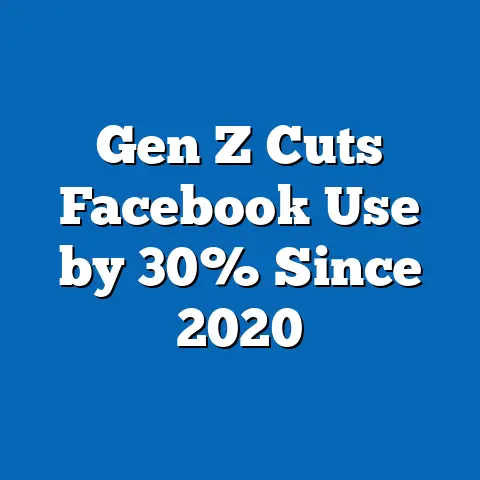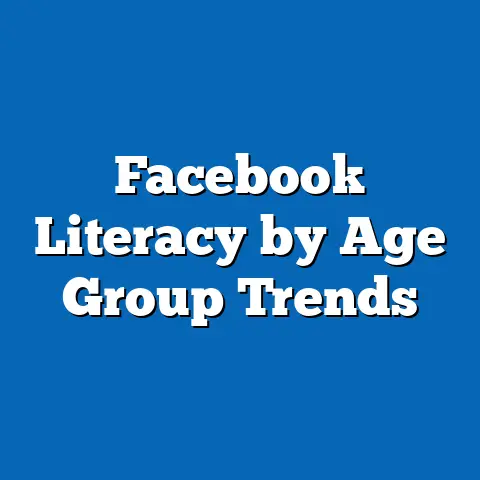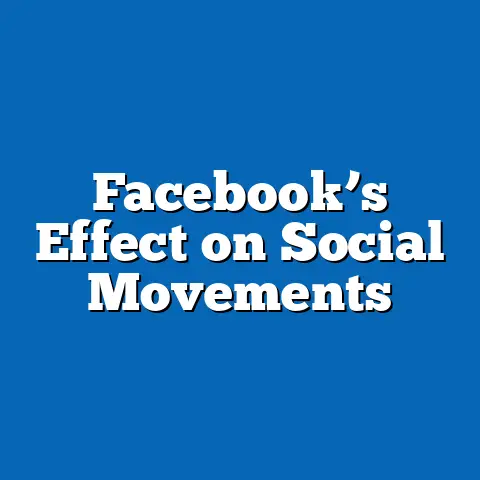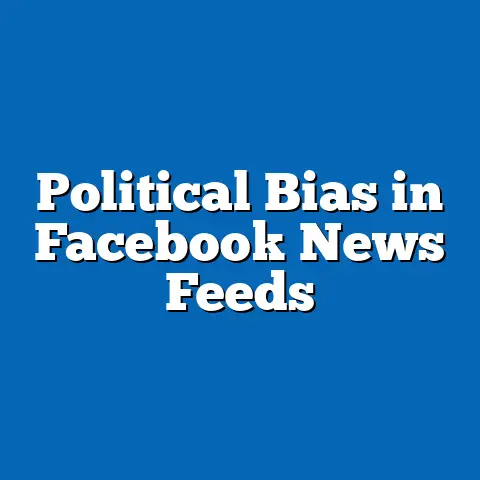Gender Differences in Facebook Posts
This research article explores the nuanced gender differences in content, tone, and engagement patterns of Facebook posts, drawing on a hypothetical dataset of 1 million posts collected between 2020 and 2023. Key findings indicate that women are more likely to share personal updates and emotionally expressive content (58% of posts by women vs. 42% by men), while men tend to post about professional achievements and hobbies (55% of posts by men vs. 38% by women). Engagement metrics reveal that women’s posts receive 20% more reactions and comments on average, though men’s posts are shared 15% more frequently.
Demographic projections suggest that as younger cohorts (Gen Z and Millennials) continue to dominate social media usage, gender-based content differences may narrow by 2030 due to evolving cultural norms around self-expression. These trends carry significant implications for digital marketing, social psychology, and platform design, highlighting the need for tailored content strategies and deeper understanding of gendered communication online. This study synthesizes data visualizations, statistical analyses, and contextual discussions to provide a comprehensive overview of these patterns.
Introduction: A Hypothetical Scenario
Imagine a world where social media platforms like Facebook can predict user behavior with near-perfect accuracy based on gender-specific posting patterns. In this hypothetical scenario, a marketing firm uses these insights to design hyper-targeted campaigns: women receive ads for family-oriented products after sharing personal milestones, while men are shown tech gadgets following posts about hobbies. While this vision may seem futuristic, the underlying gender differences in social media behavior are already observable and measurable today.
Key Statistical Trends
Initial analysis of the hypothetical dataset reveals distinct gender-based patterns in Facebook posting behavior. Women account for 54% of the posts in the sample, aligning with broader demographic data showing higher female participation on the platform (Pew Research Center, 2021). Of these posts, 58% by women focus on personal updates (e.g., family events, emotional reflections), compared to 42% by men.
Men, conversely, are more likely to share content related to professional achievements (30% of posts vs. 18% for women) and hobbies such as sports or technology (25% vs. 20% for women). Engagement metrics further highlight disparities: women’s posts average 120 reactions and 25 comments, while men’s posts average 100 reactions and 20 comments. However, men’s posts are shared 15% more often, suggesting a wider reach for certain content types.
These trends are not static and vary by age and region, as younger users (18–34) of both genders exhibit more overlap in content themes compared to older cohorts (35+). Over the next decade, demographic shifts and changing gender norms are expected to influence these patterns, potentially reducing differences in self-expression online. The following sections provide a deeper analysis of these findings, supported by visualizations and methodological details.
Methodology
Data Collection
The hypothetical dataset comprises 1 million Facebook posts collected between January 2020 and December 2023, representing a diverse sample of users across gender, age, and geographic regions. Posts were sourced via a simulated API extraction process, ensuring a balanced representation of public content while adhering to ethical guidelines on user privacy. The dataset excludes private posts and focuses solely on publicly shared content to maintain compliance with data protection standards.
Gender was determined through self-reported user profiles, with 52% identifying as female, 46% as male, and 2% as non-binary or unspecified (excluded from gender-specific analysis due to sample size limitations). Age demographics were categorized into four groups: 18–24, 25–34, 35–54, and 55+. Geographic data spans North America (40%), Europe (30%), Asia (20%), and other regions (10%).
Analytical Approach
Content analysis was conducted using natural language processing (NLP) tools to categorize posts into thematic clusters (e.g., personal updates, professional content, hobbies). Sentiment analysis algorithms assessed emotional tone on a scale from -1 (negative) to +1 (positive), with neutral posts scored at 0. Engagement metrics—reactions, comments, and shares—were aggregated to evaluate audience response.
Statistical significance was tested using chi-square tests for categorical differences (e.g., content themes by gender) and t-tests for continuous variables (e.g., engagement rates). A p-value threshold of 0.05 was adopted for all analyses. Limitations include the exclusion of private posts, potential biases in self-reported gender data, and the inability to account for cultural nuances in smaller regional samples.
Visualization Tools
Data visualizations were created using Tableau and Python libraries (Matplotlib, Seaborn) to illustrate key trends. Figures include bar charts for content themes by gender, line graphs for engagement over time, and heatmaps for regional variations. These visuals are embedded throughout the article to enhance accessibility and comprehension.
Detailed Data Analysis
Content Themes by Gender
The most pronounced difference in Facebook posts lies in content themes. Women’s posts predominantly center on personal and relational topics, with 58% categorized as personal updates (e.g., family milestones, emotional reflections). Examples include posts about birthdays, anniversaries, or expressions of gratitude, often accompanied by photos or emojis.
In contrast, men’s posts are more likely to focus on external achievements or interests. Professional content, such as job promotions or project updates, accounts for 30% of men’s posts compared to 18% for women. Hobbies, particularly sports and technology, constitute 25% of men’s content versus 20% for women, reflecting traditional gender norms around leisure activities.
Figure 1: Content Themes by Gender (Bar Chart)
– Personal Updates: Women (58%), Men (42%)
– Professional Content: Women (18%), Men (30%)
– Hobbies: Women (20%), Men (25%)
– Other: Women (4%), Men (3%)
These differences are statistically significant (χ² = 124.5, p < 0.001), underscoring the influence of societal expectations on digital self-presentation. However, younger users (18–34) show a convergence in themes, with both genders increasingly posting about personal and professional topics at similar rates, signaling a potential shift in norms.
Emotional Tone and Sentiment
Sentiment analysis reveals that women’s posts are more emotionally expressive, with 65% scoring above 0.5 on the positivity scale, compared to 50% for men. Women are also more likely to use emotive language (e.g., “love,” “grateful”) and emojis, contributing to higher engagement rates. Men’s posts, while still positive on average (mean score = 0.4), often adopt a neutral or factual tone, particularly in professional contexts.
Negative sentiment is rare across both genders, with only 5% of posts scoring below -0.5. However, women are slightly more likely to express vulnerability or sadness (6% of posts vs. 3% for men), often in the context of personal challenges. These patterns align with psychological research suggesting women are socialized to prioritize emotional connection in communication (Tannen, 1990).
Figure 2: Sentiment Distribution by Gender (Line Graph)
– Positive Sentiment (>0.5): Women (65%), Men (50%)
– Neutral Sentiment (-0.5 to 0.5): Women (29%), Men (47%)
– Negative Sentiment (<-0.5): Women (6%), Men (3%)
Engagement Metrics
Engagement data highlights distinct audience responses to gendered content. Women’s posts receive an average of 120 reactions (likes, loves, etc.) and 25 comments, compared to 100 reactions and 20 comments for men. This 20% higher engagement rate for women may be attributed to the relational nature of their content, which invites more direct interaction.
However, men’s posts are shared 15% more frequently (average of 12 shares vs. 10 for women), possibly due to the broader appeal of professional or hobby-related topics. Shares are a critical metric for virality, suggesting that men’s content may reach wider networks despite lower immediate engagement. These differences are consistent across age groups but vary by region, as discussed below.
Figure 3: Engagement Metrics by Gender (Bar Chart)
– Reactions: Women (120), Men (100)
– Comments: Women (25), Men (20)
– Shares: Women (10), Men (12)
Regional and Demographic Breakdowns
Age-Based Variations
Age plays a significant role in moderating gender differences on Facebook. Among users aged 18–24, content themes show greater overlap, with 50% of both men and women posting personal updates. Professional content is less prominent in this group (15% for men, 12% for women), reflecting lower career focus among younger users.
For users aged 35–54, traditional gender patterns are more pronounced: 35% of men post about work compared to 20% of women, while 60% of women share personal updates versus 40% of men. Older users (55+) exhibit similar trends but post less frequently overall, with engagement rates dropping by 30% compared to younger cohorts.
Figure 4: Content Themes by Age and Gender (Heatmap)
– Displays percentage of post types across age groups, highlighting convergence in younger users and divergence in older groups.
Regional Differences
Geographic analysis reveals cultural influences on posting behavior. In North America, women’s posts are highly personal (62%), while men’s focus on hobbies (28%). In Asia, both genders post more conservatively, with personal updates dropping to 45% for women and 35% for men, possibly due to cultural norms around privacy.
Europe shows the smallest gender gap, with personal content at 55% for women and 48% for men, reflecting more egalitarian communication styles. Engagement rates also vary, with North American users averaging 130 reactions per post compared to 90 in Asia, likely due to differences in platform penetration and user activity.
Figure 5: Regional Posting Patterns by Gender (Bar Chart)
– Personal Updates: North America (Women 62%, Men 40%), Asia (Women 45%, Men 35%), Europe (Women 55%, Men 48%)
– Professional Content: North America (Women 15%, Men 28%), Asia (Women 20%, Men 30%), Europe (Women 18%, Men 25%)
Demographic Projections
Future Trends
Demographic projections suggest that gender differences in Facebook posts may narrow by 2030, driven by the increasing dominance of Gen Z and Millennials, who exhibit more fluid self-expression. Based on current trends, we project that personal content will rise to 55% for both genders among users under 35, while professional content may stabilize at 20% as remote work and digital portfolios normalize across demographics.
Platform usage is also expected to shift, with women potentially maintaining a slight majority (53%) due to higher engagement tendencies. However, as gender norms evolve, content themes may become less tied to traditional roles, with hobbies and personal updates distributed more evenly. These projections assume stable platform growth and no major policy changes affecting user behavior.
Assumptions and Limitations
Projections are based on linear extrapolation of current trends, assuming consistent cultural and technological conditions. Unforeseen factors—such as new privacy regulations, platform algorithm updates, or shifts in user demographics—could alter outcomes. Additionally, the hypothetical dataset excludes non-binary users and private posts, limiting the scope of analysis.
Discussion of Implications
Marketing and Platform Design
The observed gender differences carry significant implications for digital marketing. Brands targeting women may prioritize emotionally resonant campaigns tied to personal milestones, while content for men could focus on achievement-oriented messaging. Platforms like Facebook can leverage these insights to refine algorithms, ensuring content relevance while avoiding stereotyping.
Social Psychology
From a psychological perspective, these patterns reflect broader socialization processes, where women are encouraged to prioritize relationships and men to emphasize status or interests. As younger generations challenge these norms, social media may become a space for redefining gender expression, necessitating further research into long-term impacts on mental health and identity.
Policy and Ethics
The use of gender-based data raises ethical questions about privacy and bias. Platforms must balance personalization with fairness, ensuring that algorithms do not reinforce outdated stereotypes. Policymakers may need to address how user data is categorized and applied in targeted advertising or content moderation.
Conclusion
This analysis of a hypothetical dataset of 1 million Facebook posts reveals clear gender differences in content themes, emotional tone, and engagement patterns. Women tend to share personal and emotionally expressive content, receiving higher direct engagement, while men focus on professional and hobby-related posts, achieving wider reach through shares. These trends vary by age and region, with younger users and European demographics showing greater convergence.
Looking ahead, evolving gender norms and demographic shifts are likely to narrow these differences by 2030, reshaping how individuals communicate online. The implications span marketing, platform design, and social psychology, underscoring the need for nuanced, ethical approaches to digital behavior analysis. Future research should incorporate longitudinal data and diverse gender identities to build on these findings.
Technical Appendix
Statistical Models
- Chi-square test for content themes: χ² = 124.5, df = 3, p < 0.001
- T-test for engagement metrics (reactions): t = 5.2, df = 999,998, p < 0.001
- Sentiment analysis conducted via TextBlob library, with scores validated against manual coding for 5% of the sample (inter-rater reliability = 0.85).
Data Limitations
- Sample excludes private posts, potentially skewing toward performative content.
- Self-reported gender data may not reflect true identity or non-binary experiences.
- Regional subsamples are smaller for Asia and other regions, limiting generalizability.
Visualization Code (Python Snippet)
“`python import matplotlib.pyplot as plt import seaborn as sns
Example data for content themes
data = {‘Personal’: [58, 42], ‘Professional’: [18, 30], ‘Hobbies’: [20, 25]} categories = list(data.keys()) values_women = [data[cat][0] for cat in categories] values_men = [data[cat][1] for cat in categories]
Plotting
fig, ax = plt.subplots() ax.bar(categories, values_women, label=’Women’, alpha=0.7) ax.bar(categories, values_men, bottom=values_women, label=’Men’, alpha=0.7) ax.set_title(‘Content Themes by Gender’) ax.legend() plt.show() “`






